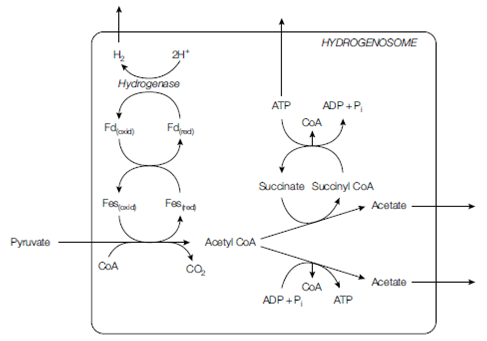Oxygen and carbon dioxide
In an aquatic environment temperature influences levels of dissolved oxygen. Oxygen utilization by living organisms increases with a rise in temperature; thus, availability of oxygen is likely to limit growth in warmer waters.

Figure 3. Hydrogenosomal metabolism in the trichomonads. Fes, iron-sulfur proteins; Fd, ferredoxin; oxid, oxidized state; red, reduced state.
Carbon dioxide, the levels of which in water vary inversely with dissolved oxygen, provides carbon to autotrophic species for photosynthesis. Most chlorophytes and photo- synthetic excavates and chromalveolates utilize carbonic acid. Anaerobic photosynthesis occurs in a few species, using hydrogen sulfide or carbon dioxide as terminal acceptors.
The absolute requirement for light in photosynthetic species means that they must have adaptations that allow them to remain in the photic zone of their environment. On land this is not problematic, but in the aquatic ecosystem there is a natural tendency for cells to sink, and thus there are cell modifications that counter this. Many zoospores and gametes are flagellate and can sense light, swimming towards it. Other species have structural modifications like spines that increase the resistance of the cell to sinking, and catch water uplift. Some have gas vacuoles that increase buoyancy.